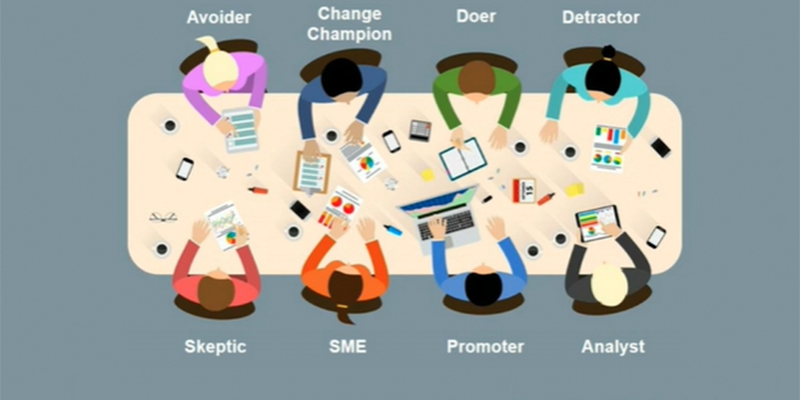A Quick Guide to Change Management
In Brief:
-
Trying to successfully deliver change while navigating daily work responsibilities may be daunting, though necessary.
-
Change management is using a process to help people implement and adopt the change. The process can include tools, resources, and workflows.
-
Before implementing change, look at the broad picture of your organization to design your unique change approach.
Blog Post
The challenge of change
Between moving to remote learning, regulation changes, and tuition rate and refund impacts, change is the only constant in higher education. Trying to successfully deliver change while navigating daily work responsibilities may be daunting, though necessary. Change can also be scary, even when it boosts opportunities and efficiencies in the organization. As a project manager, who led 100+ projects with clients in higher education, I’ve witnessed many campus change initiatives. Recently, I held a webinar, “A Quick Guide to Change Management,” and outlined techniques for navigating and leading organizational change. Today, I’m going to give you the highlights.
Gartner.com states, “The average organization has undergone five enterprise changes in the past three years, and 73% of organizations expect more change initiatives in the next few years.”
Even though change can present an opportunity, without an appropriate focus on the two components of change — people and process — successful change initiatives are difficult to achieve.
Why does change fail?
- Lack of sponsors
No sponsor is assigned, or the people championing the change aren’t adequately positioned to drive progress, make decisions, and inspire others to change. - Lack of emphasis on people
While the change is perceived as an organizational initiative, the impact on the individuals is overlooked. When change is forced upon people, resistance and frustration may arise in the workplace. It’s imperative to engage and empower employees, especially those who are impacted and involved in the change process. - Unclear direction or lack of vision
No one can clearly articulate why the change is occurring. A haphazard approach to implementing change and absence of clarity leads to chaos. Resistance often results from a lack of understanding of the reasons for change and the implications of not changing. A strong change sponsor and change team must focus their efforts on clarifying the vision and the expected benefits.
What is change management?
In a nutshell, change management is using a process to help people implement and adopt the change. The process can include tools, resources, and workflows. Change implementations are contingent on two pillars: people and processes. Those pillars when addressed and combined diligently, deliver success.
Pillar 1: People
Organizations are simply groups of individuals within an entity. Before implementing change, look at the broad picture of your organization to design your unique change approach. There are two groups of factors to consider:
- Enterprise Environmental Factors (EEF): What boundaries must you consider?
- Regulatory
- Culture
- Geography
- Environment
- Political climate
- Risk appetite
- Market conditions
- Organizational Process Assets (OPAs): How does the organization do things?
- Policies
- Guidelines
- Procedures
- Plans
- HR
It’s impossible to achieve organizational change without considering the people involved in the change. By considering these factors, you can develop a custom plan that works for your unique organization and your unique change team.

Speaking of the change team, to move change forward, you need the right people at the table. Understanding people’s expectations and anticipating their behavior is an essential element of change management. In the webinar, I discuss the eight most common types of personas we may find on our team. From the change champion, to the analyst, to the skeptic, each personality type needs to be considered with patience and understanding.
Pillar 2: Process
An effective process brings structure and logic to change management. The change process can be qualified in three stages:
- Need
The need may stem from an idea (external or internal factors). This stage determines the direction and purpose of the change. This serves to define the vision, the why, and the costs involved. Costs can include the cost of not changing, the cost of delaying the change, and the actual cost of implementing the change itself. - Transition
This stage involves the actual act of “doing,” replacing the old process with the new. During this stage, expect fear and resistance. You may find yourself balancing emotional and rational needs. It is critical to stay connected with the stakeholders and continue to reinforce your why. Have a clear communication plan, including channels and ways to monitor communications to various audiences. Leverage the phases of the transition and consider where you can introduce gradual changes instead of overwhelming the team. Remember to celebrate the wins at each point and add incentives for people to stay involved. - Adoption
This stage is about maintaining the change and driving towards a new status quo. Without this stage, progress may revert to familiar habits from the past. Keep celebrating the wins and promote incentives for people who are maintaining the new processes or products. Support teams along the way. Offer individual check-ins to ensure needs are met, and everyone understands how to perform their new tasks or roles. Last but not least, track the adoption rates and the utilization of the latest methods to ensure your change establishes strong roots within the organization.
Combine the Pillars
Both people and process pillars are necessary for change to be implemented and maintained in any organization. By understanding these two pillars and combining them in a way that serves your institution, you can drive effective and lasting change.
For the full story, check out my entire webinar, “A Quick Guide to Change Management.”
Author: Nelnet Campus Commerce
